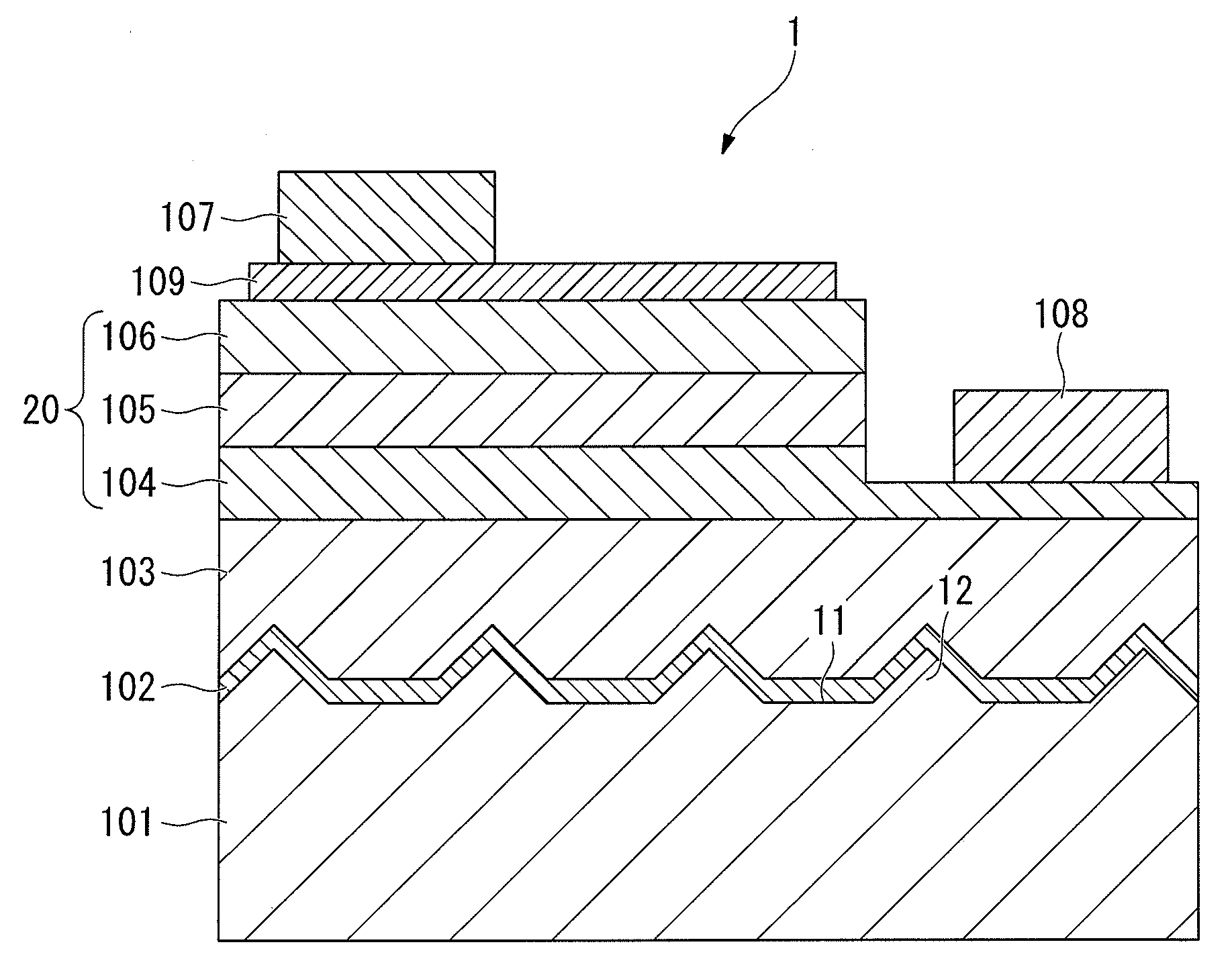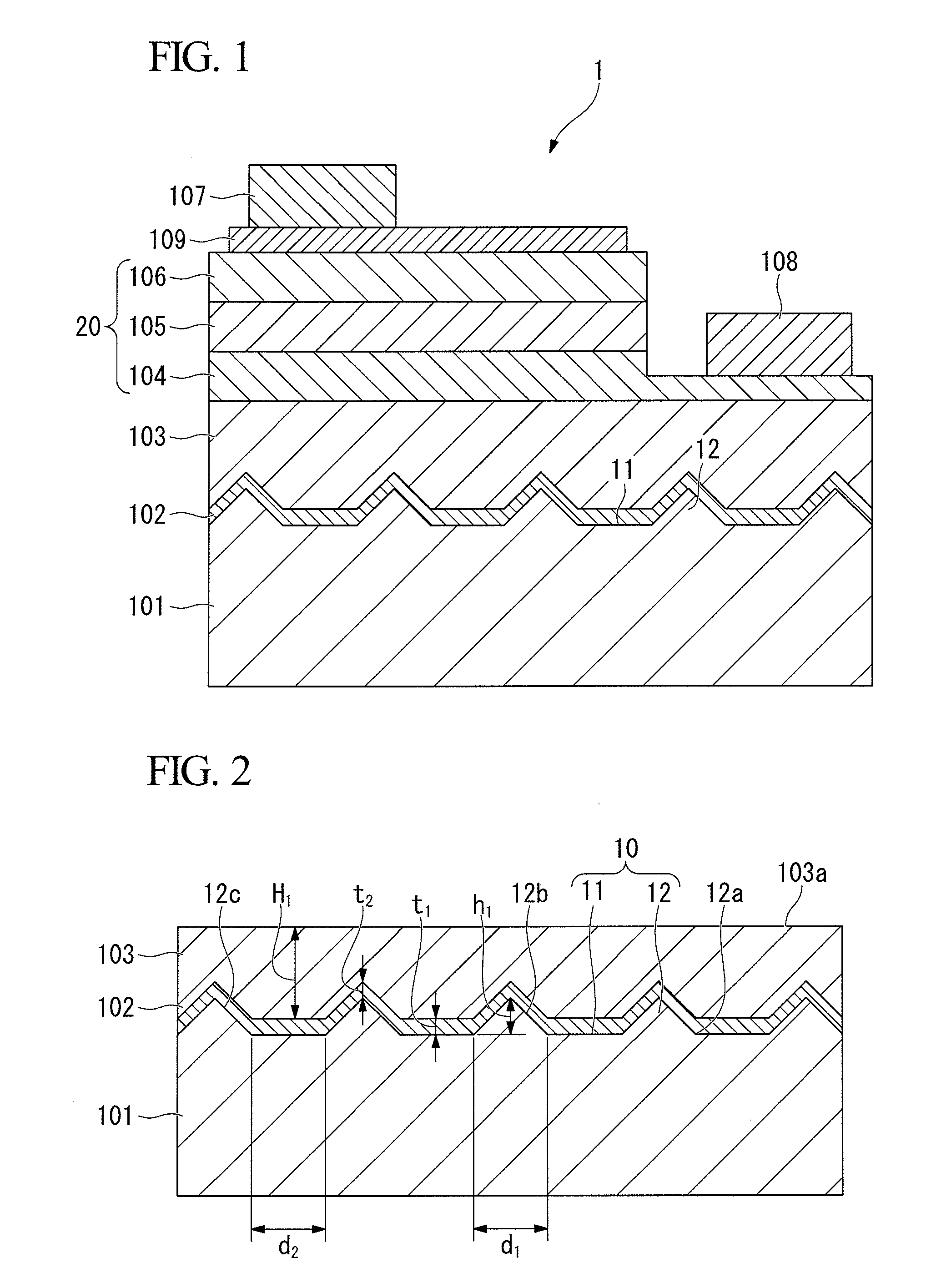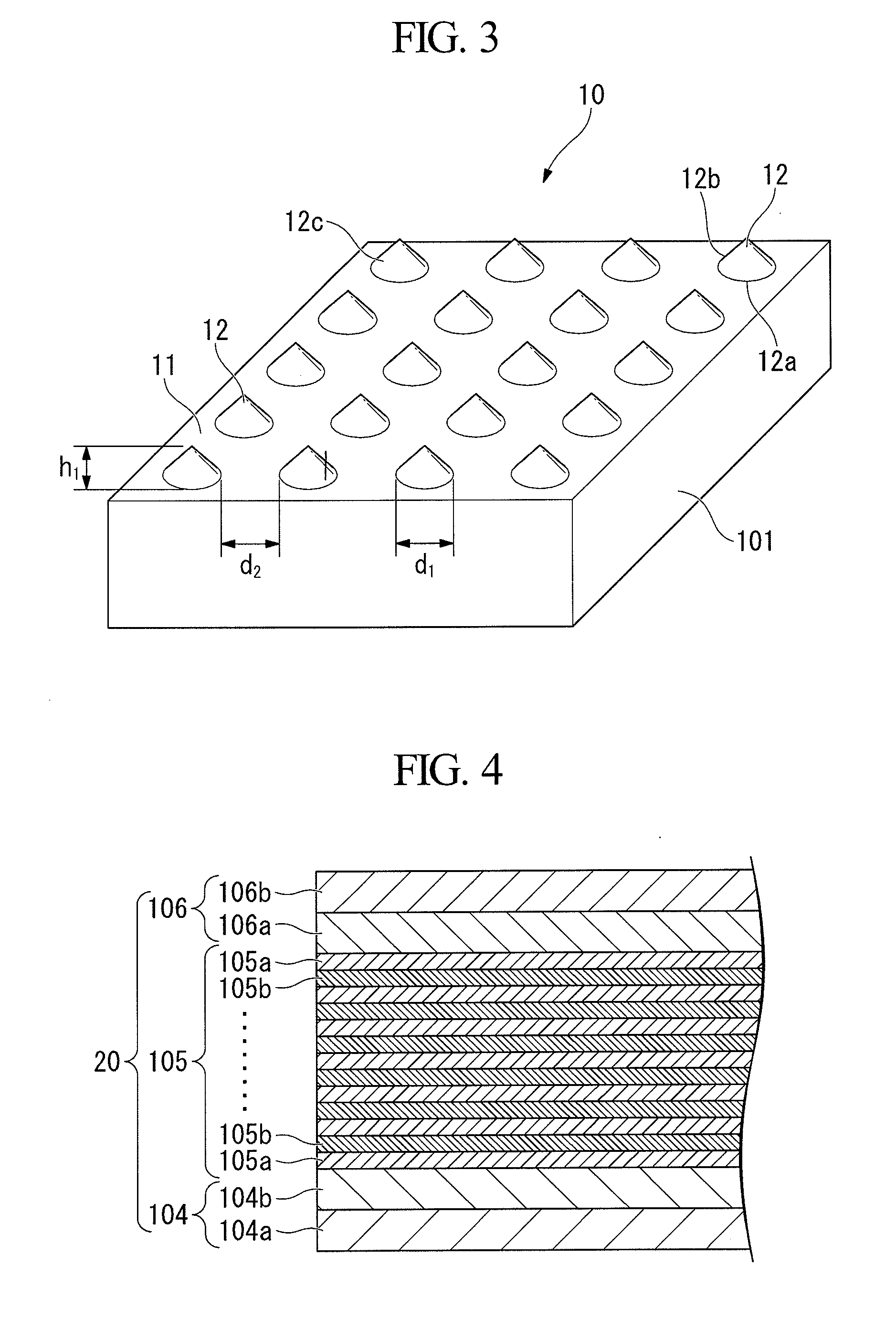Semiconductor light-emitting device, manufacturing method thereof, and lamp
a semiconductor and light-emitting technology, applied in semiconductor devices, current collectors, solid-state devices, etc., can solve the problems of difficult growth of deterioration of the crystallinity of the semiconductor layer of the led structure, and difficulty in growing a group iii nitride semiconductor layer having excellent crystallinity. , to achieve excellent crystallinity, the effect o
- Summary
- Abstract
- Description
- Claims
- Application Information
AI Technical Summary
Benefits of technology
Problems solved by technology
Method used
Image
Examples
example 1
[0138]The plurality of projection portions having the “base width”, “height”, “base width / 4”, and “interval between adjacent projection portions” shown in Table 1 and the shape shown in Table 2 was formed on the (0001) c-plane surface of a sapphire substrate having a diameter of 100 mm (diameter of 4 inches) as follows (substrate processing process). Here, a mask was formed using known photolithography on the c-plane surface of sapphire substrate of the diameter of 4 inches, the sapphire substrate was etched using dry etching, to thereby form the projection portions. As an exposure method, a stepper exposure method using ultraviolet light was used. Furthermore, a mixed gas of BCl3 and Cl2 was used for the dry etching.
TABLE 1BaseInterval betweenBase width dHeight hwidth / 4adjacent projection(μm)(μm)(μm)portions (μm)Example 11.20.60.30.5Example 21.50.60.40.5Example 32.50.80.61.5Example 41.50.40.40.2Example 51.50.60.40.5Comparative1.50.60.40.5Example 1Comparative1.50.60.40.5Example 2
TAB...
example 2 to example 4
[0169]Light-emitting devices of Examples 2 to 4 were formed in the same manner as in Example 1 except that the plurality of projection portions having the “base width”, “height”, “base width / 4”, and “interval between adjacent projection portions” shown in Table 1 and the shape shown in Table 2 was formed on the (0001) c-plane surface of the sapphire substrate, and the light emission characteristics (temperature characteristics) were evaluated in the same way as in Example 1. The result is shown in Table 3.
[0170]Furthermore, the film thickness on the projection portion of the intermediate layer and the film thickness on the c-plane surface, whether the crystal phase on the c-plane surface and the projection portion is the single-crystal phase or the polycrystalline phase are shown in Table 2.
example 5
Comparative Example 1 and Comparative Example 2
[0171]Light-emitting devices of Example 5 and Comparative Examples 1 and 2 were formed in the same manner as in Example 1 except that the plurality of projection portions having the “base width”, “height”, “base width / 4”, and “interval between adjacent projection portions” shown in Table 1 and the shape shown in Table 2 was formed on the (0001) c-plane surface of the sapphire substrate and the intermediate layer was formed under the condition shown in Table 2, and the light emission characteristics were evaluated in the same way as in Example 1. The result is shown in Table 3.
[0172]Furthermore, the film thickness on the projection portion of the intermediate layer and the film thickness of the c-plane surface, whether the crystal phase on the c-plane surface and the projection portion is the single-crystal phase or the polycrystalline phase is shown in Table 2.
[0173]As shown in Table 2, in the light-emitting devices of Examples 1 to 5, ...
PUM
 Login to View More
Login to View More Abstract
Description
Claims
Application Information
 Login to View More
Login to View More - R&D
- Intellectual Property
- Life Sciences
- Materials
- Tech Scout
- Unparalleled Data Quality
- Higher Quality Content
- 60% Fewer Hallucinations
Browse by: Latest US Patents, China's latest patents, Technical Efficacy Thesaurus, Application Domain, Technology Topic, Popular Technical Reports.
© 2025 PatSnap. All rights reserved.Legal|Privacy policy|Modern Slavery Act Transparency Statement|Sitemap|About US| Contact US: help@patsnap.com



